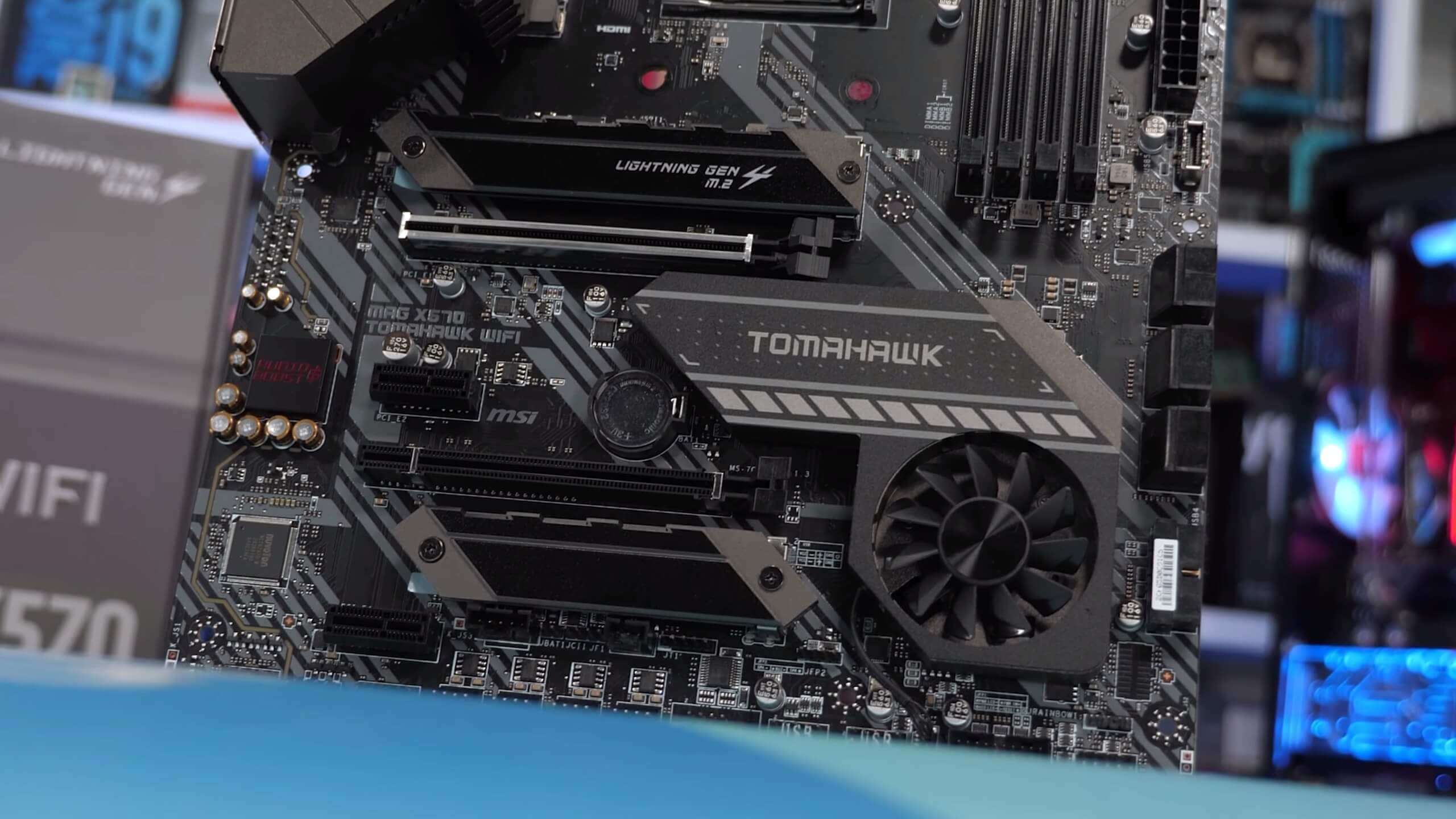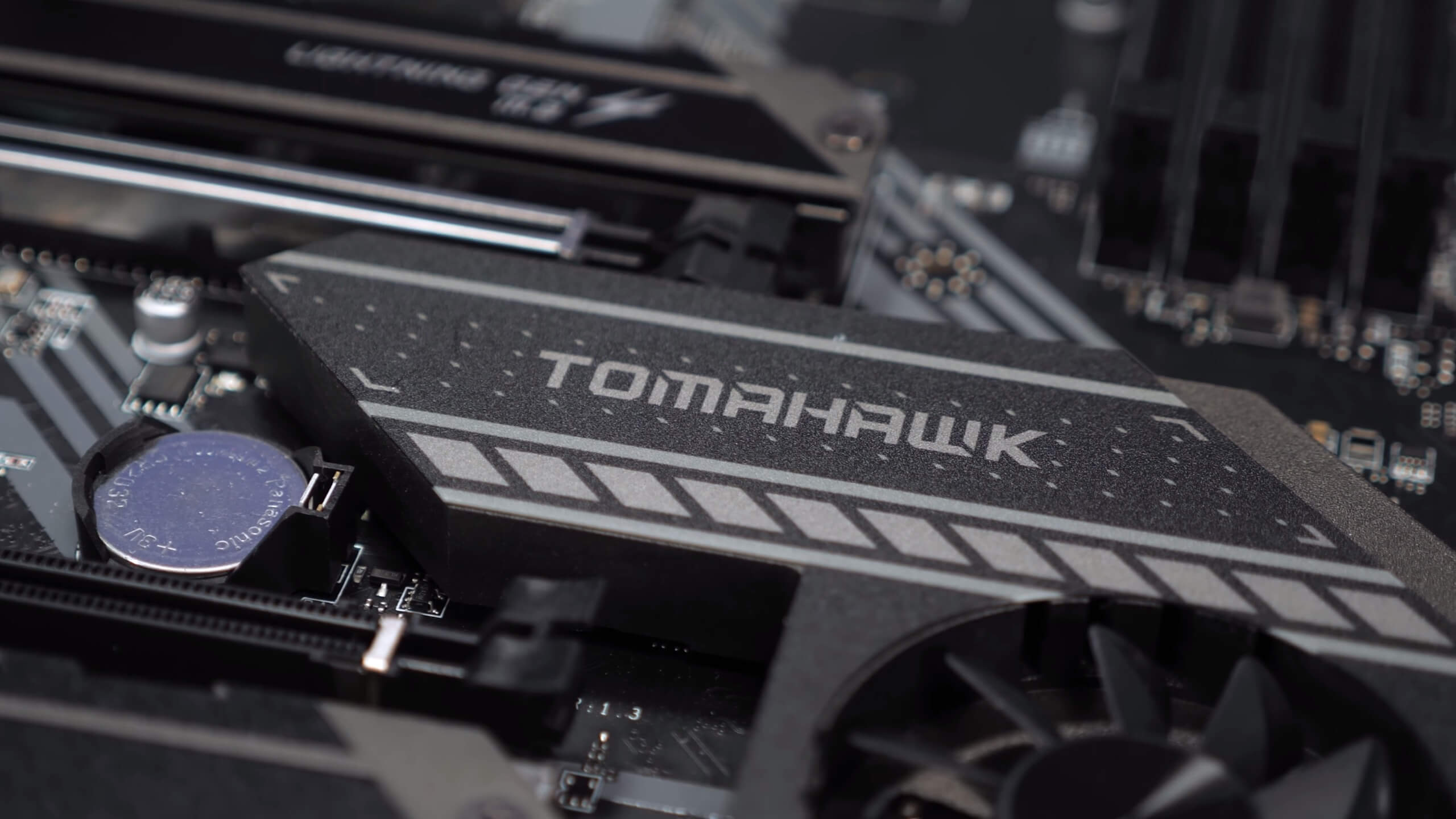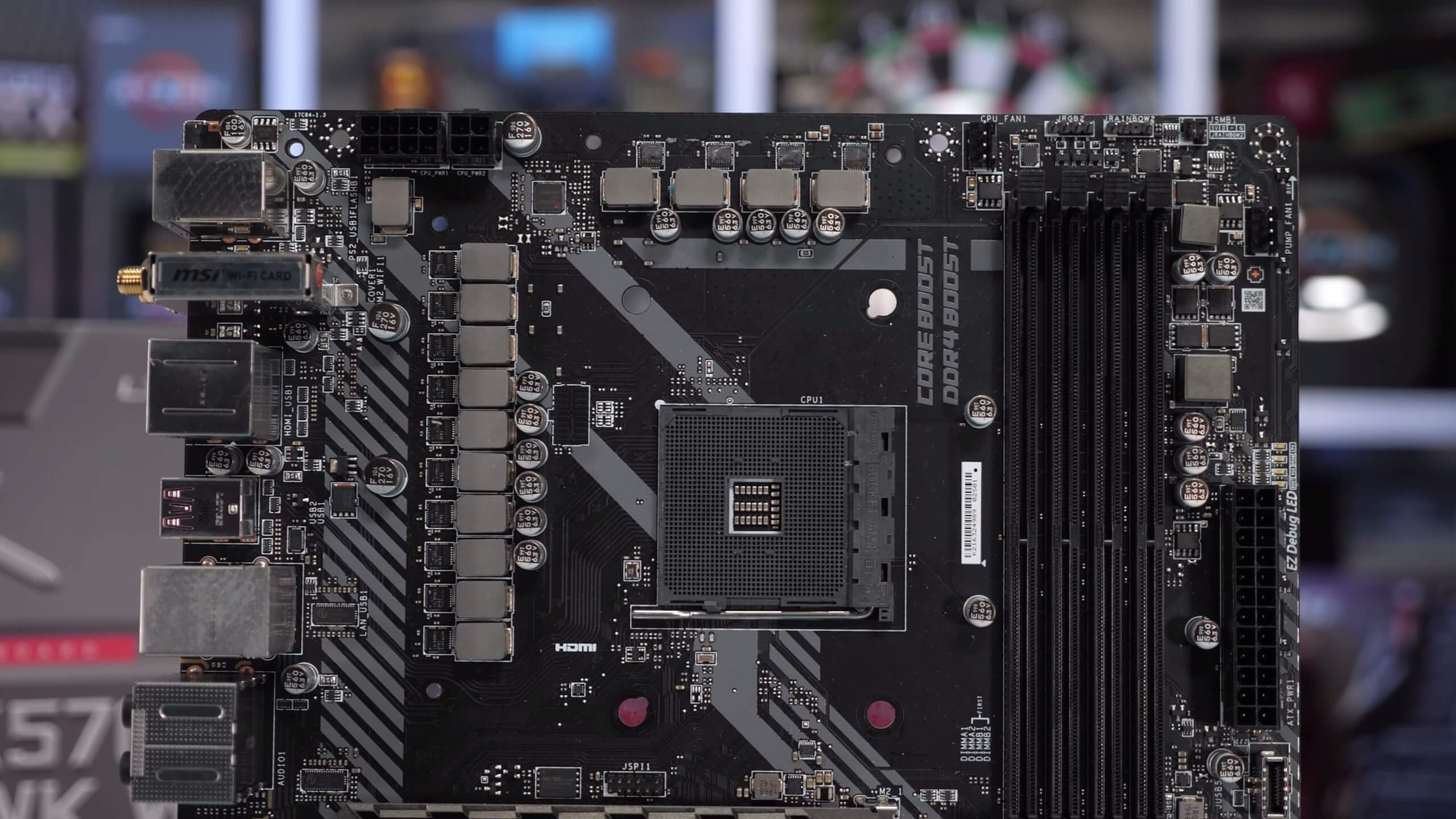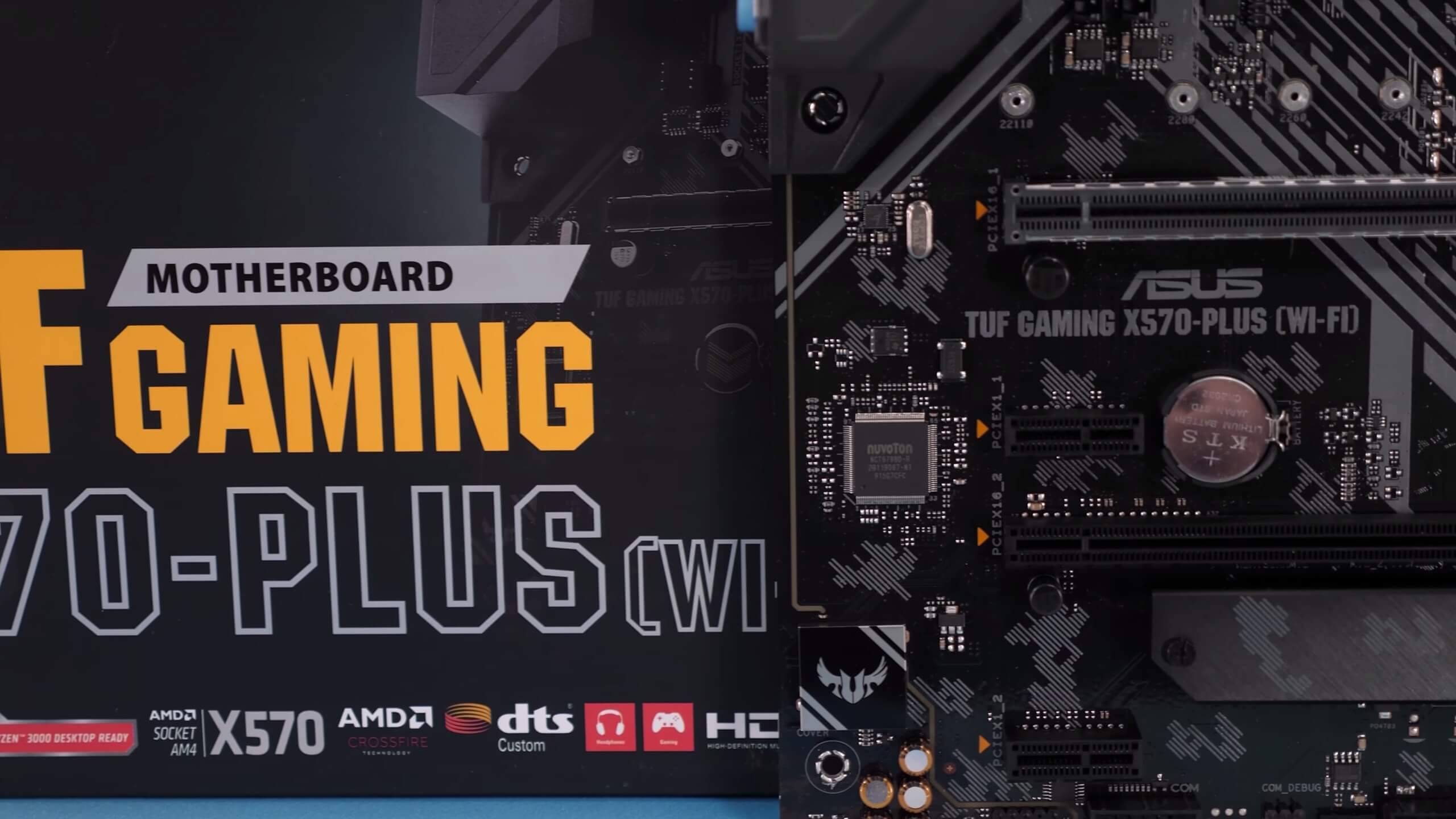Today we're taking a look at MSI's new X570 Tomahawk motherboard. We've been keen to test this thing out for months now as this is a very important board for MSI. Not only does it mark the next stop in their X570 "redemption" tour, but at $200, it's a mainstream board many of you will be interested in.
Up until now, MSI's offering at $200 has been the X570 Gaming Edge WiFi, a board that failed our Ryzen 9 3900X VRM stress test. Making matters worse, no other brand failed that test at any price point. Those of you who have been following our X570 VRM thermal testing will know what we think of MSI's A Pro, Gaming Edge, Gaming Plus and Gaming Pro Carbon... in terms of VRM performance they're all pretty lackluster.
Admitting they needed to do better, MSI has been working on rehashing their lineup. First they replaced the $370 Ace Gaming with the the $300 Unify, stripping away the RGB lighting for a no frills affair. The X570 Unify is a great quality board, but at $300 it's out of reach for many.
This is where the MSI X570 Tomahawk comes in and at $200 it's going head to head with popular X570 mainstream boards such as the Asus TUF Gaming Plus, Gigabyte Aorus Elite and Asrock Steel Legend. Moreover, it will be replacing the horrible Gaming Edge WiFi, a board we really hope MSI discontinues, along with a few others including the X570 Pro Carbon.
We don't plan to make a thorough review of every aspect of the Tomahawk (see a full list of specs here), we've already tested over a dozen AMD X570 motherboards, and our recommendations can be found in the corresponding buying guide.
Our primary focus will be on testing VRM thermal performance as this is a key differentiator among these motherboards that will house a powerful new generation Ryzen processor. The VRM is not something that can be easily upgraded either. But before we jump into that, we should note that the Tomahawk does offer some new features over the Gaming Edge such as 2.5 Gbit networking, an additional USB 3.2 Gen 2 USB port and the Wi-Fi has been upgraded to Intel Wi-Fi 6 AX200 with Bluetooth 5.0. Other than that, it's very similar to what we saw before in terms of design, VRM excluded, of course.
Moving on to talk about the VRM configuration, the X570 Tomahawk uses the ISL69247 controller of which six signals are taken for the vcore portion of the VRM and then doubled using ISL6617 phase doublers. Those 12 phases then connect to the stars of the show, a dozen ISL99360 60A power stages. In the previous Gaming Edge WiFi, MSI used an Infineon IR35201 controller with four signals for the vcore VRM, each doubled using an IR3598 phase doubler.

By default MSI uses a 500 KHz CPU switching frequency for both boards and Buildzoid calculates that at 1.2v with a 200A draw the Gaming Edge VRM puts out 46 watts of heat and that would explain why these boards run so hot given a 3950X will pull around 170-190A with PBO enabled. Meanwhile Buildzoid also calculates that the new Tomahawk board will generate just 17 watts of heat under the exact same conditions. That's over a 60% reduction in thermal output.
Looking at competing boards such as the Asus TUF Gaming X570-Plus and Gigabyte Aorus Elite, those boards both use a dozen Vishay SIC639 50A power stages which are basic DRMOS components with basically no current or temperature monitoring. The smart power stages used by the Tomahawk feature current and temperature monitoring, and then of course they're rated for 60A, so will support higher currents.
The Tomahawk features a similar heatsink design to that of the Gaming Edge, but that's fine since that was not what let the Gaming Edge down, rather it was the junk under it. On paper the X570 Tomahawk looks great and there's no reason why this shouldn't be by far the best $200 AM4 motherboard period. For now, let's move onto the testing.
Benchmarks
For load testing we're running the Blender Gooseberry workload for an hour on an open air test bench with no direct air flow. Normally we also test inside a PC case but for the X570 testing we skipped this step as the plan was to re-test over twenty X570 motherboards once the Ryzen 9 3950X was released. As it turned out, the 3950X was no more power demanding than the 3900X, so a re-test wasn't warranted.
To record the temperatures we're using a digital thermometer with K-Type thermocouples and we're reporting peak MOSFET surface and rear PCB temperature. For the MOSFETS this means we're measuring the temperature directly on top of the component, between it and the thermal pad and not the internal temperature which is bound to be a little higher. Still with all boards tested under the exact same conditions that will give us a clear picture of how the VRM temperatures compare.
Finally we're not reporting Delta T over Ambient, instead we maintain a room temperature of ~21 degrees. We have a thermocouple sitting next to the test system monitoring room temp.

Here's our first set of results using the Ryzen 9 3900X with PBO+Auto OC enabled in the RyzenMaster software. After the hour-long stress test the X570 Tomahawk peaked at just 58 degrees which is an incredible result, that's basically the kind of performance you can expect to see from the very best X570 motherboards. In fact, it's 3 degrees cooler on the MOSFET when compared to the Asus Hero, a board that costs twice as much. It's also able to match MSI's own $700 Godlike. Basically it's 2-3 degrees warmer than the very best X570 motherboards.
When compared to the Gaming Edge, the board the Tomahawk is replacing, we see a 48 degree drop in PCB temperature. It's also 15 degrees cooler than the TUF Gaming and 5 degrees cooler than the Aorus Elite which performs very well under this load.

Moving on to the overclocked results with the 3900X at 4.3 GHz using 1.4v, previously we found that the Gaming Edge, A-Pro and Gaming Pro Carbon all failed this test. The same applied to the Gaming Plus. The VRM on these boards simply got too hot and as a result the 3900X began to throttle. As you can see the temperatures at which these boards throttled were all quite different, the most high-end of which, the Gaming Pro Carbon, didn't even hit 100 C.
The X570 Tomahawk on the other hand maxed out at just 62 degrees, a mere 4 degree increase from the PBO test. This meant the Tomahawk was a degree cooler than the Unify when comparing driver temps and 3 degrees cooler when comparing the PCB temperature. It also meant the Tomahawk was just 4-5 degree warmer than the very best X570 boards, which is an amazing improvement for this new $200 motherboard.
It's also a significant improvement over the Asus TUF Gaming which is one of our favorite X570 motherboards at this price point. The Tomahawk lowers the PCB temperature by an incredible 16 degrees over the TUF and that also makes it 25 degrees cooler than the Gigabyte Aorus Elite. We believe the Aorus Elite cooler can't handle the thermal output as well as the TUF cooler in this test, which is why it performs much worse than what we saw in the PBO testing, some direct air flow would likely bring these boards closer together.
Moving past the Asus and Gigabyte boards, perhaps most important of all is the 63 degree drop in PCB temperature from the horrible Gaming Edge WiFi.
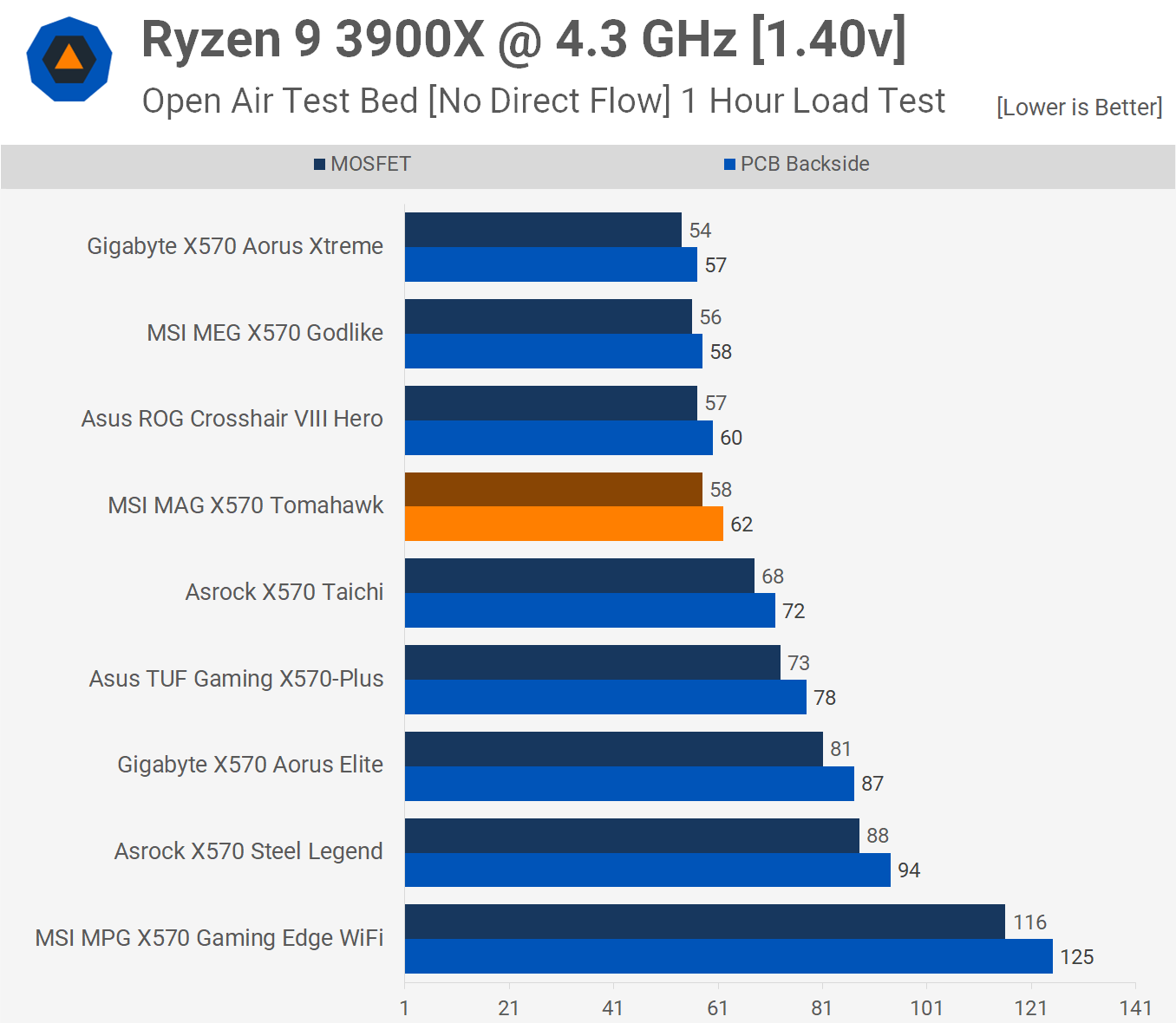
Here's a look at the Tomahawk versus its direct competitors at the $200 price point along with the flagship models from Asrock, Asus, Gigabyte and MSI for reference. This paints a clear picture of just how good the Tomahawk is, we're getting flagship VRM thermal performance for $200.
As good as the Asus TUF Gaming X570-Plus is, it can't compete with the newer Tomahawk. It's just a shame we had to wait almost a year to get a good MSI X570 board that won't cost over $300.
What to Buy, Wrap Up
MSI's new Tomahawk is the most impressive X570 motherboard we've tested at this price point. Like we just said, it's a shame we had to wait so long. MSI certainly didn't get it right the first time, but so far the do-over at a few different price points is working out great.
The MSI X570 Unify offers the best VRM performance at $300, and yet the more affordable Tomahawk is even better in this respect. Unless you're willing to spend $700, there's no beating the Tomahawk in terms of VRM thermals. In fact, you could say the Tomahawk's VRM is overkill, which we certainly won't object to, but once you start to push below 90 degrees in our 4.3 GHz OC test, for the vast majority of users, it won't matter. All sub-90 degree boards will work just fine with an overclocked Ryzen 9 3950X, even in hot environments, especially if you're just gaming.
Compared to existing MSI models, the Tomahawk obliterates boards like the X570 Gaming Pro Carbon WiFi, it's just better in every conceivable way. We also hope MSI decides to discontinue the Pro Carbon already, the thing is an embarrassment.
If you're deciding to buy between the X570 Tomahawk, TUF Gaming, Aorus Elite or even the Steel Legend, it won't make much of a difference as all will work fine with any high-end AM4 processor. If you're an overclocker, the Tomahawk does offer an advantage but otherwise the feature set among these boards is rather similar.
The Asus TUF Gaming X570-Plus WiFi has been our go to choice at this price point for almost a year now – it's currently available for about $190. The Tomahawk has the advantage of being the newer, more polished offering now, and it did run 16 degrees cooler in our OC testing, but with the TUF peaking at just 78 degrees there is no way you're going to run into any VRM issues on this board.
Bottom line, if you're buying an X570 motherboard today and you have the Tomahawk available at $200, that's the obvious choice unless the Asrock, Asus or Gigabyte alternatives are on sale at lower prices. Now we just need to wait and see the Tomahawk go on sale, that should happen early next month.
